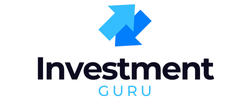A home equity line of credit (HELOC) is one of the most flexible ways to borrow against the value of your home. Whether you’re renovating, consolidating debt, or just want a safety net for unexpected expenses, a HELOC can give you access to funds whenever you need them. But before lenders approve your application, they’ll take a close look at three key factors: your credit score, income, and home equity.
In 2025, most lenders still expect a minimum credit score of around 620 to qualify for a HELOC, though stronger scores—typically 700 or higher—unlock the best interest rates and terms. Your income also matters because lenders want to be sure you can handle the payments. They’ll review your debt-to-income (DTI) ratio, often requiring it to be 43% or lower to approve your application.
Home equity is the third piece of the puzzle. Generally, you’ll need at least 15–20% equity in your property after the HELOC is added. Put simply, this means you should still own at least that much of your home outright once all your mortgage debt plus the HELOC is calculated against its value. The more equity you have, the higher your chances of approval and the larger your available credit line.
While these requirements provide a baseline, each lender may have slightly different standards. Some may be more flexible with credit scores but stricter with income, while others may allow higher loan-to-value (LTV) ratios if you have excellent credit. Knowing what’s typical in 2025 can help you prepare your finances and apply with confidence.
In this article, we’ll break down the credit score, income, and equity requirements for HELOCs in 2025 and share tips on how to strengthen your application. With the right preparation, you can maximize your chances of getting approved and secure the best possible terms for your line of credit.
Table of Contents
What is a HELOC and Why Does It Matter in 2025?

A Home Equity Line of Credit (HELOC) is a revolving line of credit secured by the equity you’ve built in your property. Much like a credit card, you can draw funds up to your approved limit, repay them, and borrow again during the draw period. Because it is backed by your home, lenders carefully evaluate credit score, income stability, and home equity before approval.
According to the Consumer Financial Protection Bureau (CFPB), HELOCs remain one of the most flexible home financing tools. In 2025, increased interest rates and stricter lending rules make qualifying more challenging but still achievable with preparation.
Minimum HELOC Requirements for Credit Score in 2025
Lenders rely heavily on your credit profile to set interest rates and determine eligibility. While each lender differs, here are the general credit score requirements for HELOCs in 2025:
| Credit Score Range | Approval Likelihood | Expected Interest Rate | Notes |
|---|---|---|---|
| 760+ | Very High | Lowest Available | Preferred rates for excellent borrowers |
| 700–759 | High | Competitive | Good standing with favorable offers |
| 660–699 | Moderate | Higher | Approval possible but fewer options |
| 620–659 | Low | High Rates | May require stronger income or equity |
| Below 620 | Very Low | Unfavorable or Denied | Alternative lending may be required |
Simply put: For most banks, a minimum credit score of 680–700 is necessary in 2025 to access a reasonably priced HELOC. Specialized lenders may consider 620, but terms will be costly.
How to Improve Your Credit Score Before Applying
- Pay off revolving credit balances to lower utilization.
- Check your credit report for errors at AnnualCreditReport.com.
- Avoid new applications or hard inquiries six months before HELOC application.
- Maintain on-time payments across all accounts.
Income Requirements for HELOC Approval
In 2025, lenders want assurance that you can manage additional monthly debt. The most important factor here is your Debt-to-Income (DTI) ratio. A DTI under 43% is considered the industry standard, though many lenders prefer under 36% for better rates.
For example: If you earn $8,000 gross per month and pay $2,400 in monthly debts, your DTI is 30%. Adding a $500 HELOC payment increases DTI to 36%—acceptable for most banks.
Documents You’ll Likely Need
- Two recent pay stubs (or profit-and-loss statement if self-employed)
- Two years of W-2s or tax returns
- Recent bank statements
- Proof of any additional income (alimony, bonuses, rental income)
Lenders in 2025 have continued emphasizing income stability, so freelancers and gig workers may face stricter verification, often requiring additional months of income evidence.
Home Equity Requirements
Equity remains a critical factor since HELOCs are secured against your property. Most lenders in 2025 require at least 15–20% equity left in your home after the HELOC is issued.
To calculate available equity:
Your Home Value – (Existing Mortgage + Potential HELOC) = Remaining Equity
If your home is worth $400,000 and your mortgage balance is $240,000, you have $160,000 in equity. A lender may allow up to 80% combined loan-to-value (CLTV), meaning you could borrow up to $320,000 total ($240,000 existing mortgage + $80,000 new HELOC).

Setting Up Your HELOC in 2025: Step-by-Step
Once you understand the requirements, here’s how to actually secure a HELOC:
- Research lenders: Compare local banks, credit unions, and online lenders. Many now allow digital prequalifications.
- Check your eligibility: Use online calculators offered by reputable banks such as Bank of America to estimate borrowing power.
- Gather documents: Prepare income, asset, and debt documentation early for faster processing.
- Apply online or in-branch: Most lenders in 2025 support secure digital applications.
- Appraisal & underwriting: Lenders order a professional appraisal to determine house value.
- Approval & line setup: Upon approval, you’ll gain access via checkbook, debit card, or online transfers.
Cost Considerations and Fees in 2025
While HELOCs typically have lower upfront costs than cash-out refinances, certain fees apply:
- Application fee ($0–$300, depending on lender)
- Appraisal or home valuation ($400–$700 average)
- Annual maintenance fee ($50–$100)
- Closing costs (can range 2–5% of the HELOC amount if not waived)
Best Practices: Preparing Your Profile to Meet HELOC Requirements
Borrowers can influence terms by preparing ahead. Consider:
- Boosting your FICO score above 720 for stronger offers.
- Paying down high-interest debts to improve DTI ratio.
- Ordering your appraisal independently to ensure accurate home value (optional strategy).
- Maintaining employment stability and continuous income deposits.

Comparison of HELOC vs. Alternatives in 2025
While HELOCs remain popular, some borrowers may find alternative products more suitable.
| Product | Rates | Best For | Drawbacks |
|---|---|---|---|
| HELOC | Variable (6–10% typical) | Flexible borrowing | Variable rates may rise over time |
| Home Equity Loan | Fixed (7–12% typical) | Lump sums and predictable payments | Higher initial monthly obligation |
| Cash-out Refinance | Fixed based on mortgage rates | Replacing overall mortgage at new rate | Closing costs are higher |
| Personal Loan | Unsecured, 10–15% average | No home risk | Smaller amounts, higher rates |
Action Tips to Secure the Best HELOC in 2025
- Compare three or more offers before committing.
- Negotiate annual fees and ask about closing cost credits.
- Choose a lender with promotional fixed-rate conversion options, if available.
- Plan for rate adjustments by budgeting for higher future payments.
Frequently Asked Questions
1. What credit score do I need for a HELOC in 2025?
Most lenders require a score of at least 680, but 700+ is ideal for competitive rates.
2. Can I get a HELOC with bad credit?
If your score is under 620, approval is unlikely from mainstream banks. Specialized or subprime lenders may offer costly terms.
3. How do lenders calculate my borrowing limit?
They use the combined loan-to-value ratio, usually capped around 80–85% of your home’s appraised value.
4. How long does HELOC approval take?
Processing typically takes 2–6 weeks, depending on appraisal scheduling and document readiness.
5. Do HELOCs have fixed interest rates?
HELOCs generally start with variable rates. Some lenders allow partial conversion to a fixed-rate segment.
6. Do I need to reapply each time I borrow?
No, once approved, you can borrow and repay repeatedly during the draw period, usually 10 years.
7. How does income stability affect my HELOC?
Lenders focus on steady income sources; self-employed borrowers may need extra documentation.
8. Will appraisals in 2025 be digital or in-person?
Both occur, though many lenders in 2025 now rely on hybrid or desktop appraisals for speed.
9. Can I refinance my HELOC later?
Yes, many lenders allow refinancing into new HELOCs or fixed-rate home equity loans.
10. Are HELOC closing costs negotiable?
Yes, many institutions waive some costs if you meet minimum draws or maintain the account for a set period.
Conclusion
Securing a HELOC in 2025 requires balancing credit score, income stability, and adequate home equity. Preparation is key: raise your score above 700, reduce debts, and document steady income. Whether you need funds for renovations, debt consolidation, or investment opportunities, a properly structured HELOC can be a cost-effective financing tool. Compare multiple lenders, verify your home value, and take action early to ensure you qualify for the best available terms this year.


